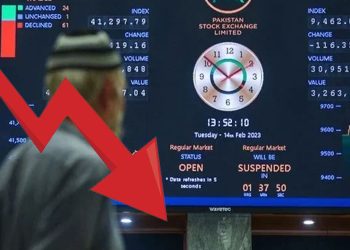The economy of Pakistan can be viewed in a number of ways. In terms of Purchasing Power Parity (PPP) it is the 24th largest in the world but in terms of nominal Gross Domestic Product (GDP) with a population of 207 million its nominal GDP per capita is $1,357 in 2019 making it the world’s 154th and giving it a PPP GDP per capita of $5839 in 2019, which ranks 132th in the world for 2019. However, the undocumented economy of Pakistan is estimated to be almost 36% of its total economy and that percentage is not taken into account while calculating the per capita income of Pakistan.
After several experiments in economic restructuring, Pakistan currently operates a mixed economy. A “mixed” economy is a mix of socialism and capitalism. In terms of the structure of its economy, Pakistan is similar to the middle-income countries of East and Southeast Asia. Pakistan has maintained a sustained and fairly steady annual growth rate since independence, but due to the rise in the population alongside output per capita has risen very slowly.
The economy of Pakistan is divided into three major sectors: Agriculture, Industry, and Services. Agriculture constitutes the largest sector of our economy and the majority of the population is dependent on this sector, whether directly or indirectly. Major crops in Agriculture contributes about 25.6% and the contribution of major crops in GDP is almost 5.4% percent accounting for almost half of the employed labor force of Pakistan. It is also the largest source of foreign exchange earnings.
The Industry Sector also called the manufacturing sector is divided into two sub-sectors; Large Scale Manufacturing and Small Scale Manufacturing. Large Scale manufacturing covers the establishments registered under factories Act 1934 or qualifying for registration (having 10 or more employees) including Repair and Service Industries. Small Scale manufacturing covers all such manufacturing establishments not covered in Large Scale manufacturing.
Share of Services is growing in all sectors of Pakistan’s economy over a period of time. This sector is divided into six sub-sectors counting: transport, general government services (public administration and defense); wholesale and retail trade; finance and insurance; storage and communication; housing services (ownership of dwellings); and other private services (social services).





